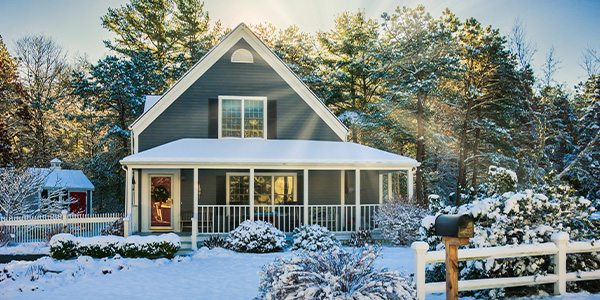Homebuyers
FHA Loan Closing Costs: Understanding What's Included and How You May Be Able to Save Money
June 13, 2025
Many homebuyers choose Federal Housing Administration (FHA) loans because they don’t need to bring as much money to the closing table.
But they will still need to pay for FHA closing costs, the fees and expenses for these mortgages.
In 2023, buyers paid a median of $6,684 in total loan costs, a measure of closing costs that includes expenses such as lender and appraisal fees, according to a report from the Consumer Financial Protection Bureau.
If you’re using an FHA home loan, a government-backed mortgage popular among first-time homebuyers, other key factors can also influence the total amount of cash you’ll need at the closing table. These can include the size of your down payment, upfront mortgage insurance requirements, and potential seller contributions.
Riana Wasbin, a New American Funding senior loan officer based in Tustin, Calif., noted that closing costs vary widely depending on your loan type and location.
“The answer is not going to be the same for someone buying in California versus somebody buying in Alabama or Kentucky,” Wasbin said.
Understanding typical FHA closing costs
As a rule of thumb, experts recommend setting aside roughly 2% to 6% of the loan amount towards closing costs.
For a $300,000 home loan, that would be between $6,000 and $18,000.
That is in addition to the minimum FHA down payment of at least 3.5% of the sale price of the home also due at closing.
Costs and fees included in FHA closing costs

Numerous expenses and fees are included under what Wasbin calls the “closing-cost umbrella” for FHA loans.
Prior to closing, your lender should provide a disclosure document that clearly outlines these costs, including:
- Escrow deposits to cover homeowners insurance premiums, property taxes, and applicable homeowner association (HOA) fees. Typically, the fees involved in buying a home go into escrow accounts.
- Fees paid to third parties for title and appraisal services, among others. A home appraisal is required as part of the FHA loan process.
- Expenses paid to your lender, such as a credit check, origination fee and mortgage discount points (interest prepaid to your lender in exchange for a lower interest rate, with one point generally costing 1% of your loan’s value).
For FHA homebuyers, an additional expense, called an upfront mortgage insurance premium (UFMIP) also applies. This fee is calculated as 1.75% of your loan amount, paid at closing or rolled into your loan.
Note that UFMIP is distinct from the FHA’s additional annual mortgage insurance premium (MIP) requirement, which is paid monthly.
For a $300,000 home, your upfront MIP cost would be calculated as follows, assuming you make a 3.5% or 10% down payment and are approved for the remaining loan amount:
|
Purchase price |
$300,000 |
$300,000 |
|
Down payment |
3.5% or $10,500 |
10% or $30,000 |
|
Remaining loan amount |
$289,500 |
$270,000 |
|
Upfront MIP (1.75% of loan amount) |
$5,066.25 |
$4,725 |
How to roll closing costs into your FHA home loan

Buyers often choose to finance their upfront MIP payment, meaning your lender adds it to your loan amount and adds it into your monthly loan payment.
This reduces the amount you pay at closing but can lead to higher monthly payments (and increases the total interest paid on your loan).
Similarly, you may be able to reduce upfront closing costs through lender credits. This is when your lender covers some or all closing costs in exchange for a higher mortgage interest rate.
How to apply seller contributions to FHA closing costs
Another way to reduce closing costs is by having your seller cover a portion of these expenses, also called a seller credit or concession.
Seller credits on FHA loans are capped at 6% of the home’s purchase price or appraised value, whichever is lower. That can make a real difference for buyers compared to other loan types.
Conventional and VA loans are generally capped at 3% to 6% and 4% percent, respectively, according to Wasbin.
Gift funds from friends or family members can also be used towards closing costs, provided you follow FHA documentation and eligibility guidelines.
FHA closing costs compared to other loan types

Aside from the upfront mortgage insurance premium, FHA and Conventional loan closing costs are typically similar.
Comparing VA and FHA closing costs isn’t always straightforward because of how their fees and loan structures differ. For example, VA loans require a funding fee at closing, but can offer buyers up to 100% financing. That means no down payment is required.
If you’re not sure which mortgage is right for you, look at the costs to refinance the different types of loans in the future. For example, when mortgage rates fall, you may want to lock in a lower rate to lower your monthly payments.
Both FHA and VA loans also offer a streamline refinance option for buyers looking to lower their monthly costs. These loans generally require fewer steps and may be cheaper to refinance than refinancing other types of mortgages.
Just make sure you’re clear on how the FHA’s upfront and annual MIP costs will affect your total loan amount and monthly payments over time.
Riana Wasbin NMLS #917138






 Smart Moves Start Here.
Smart Moves Start Here.